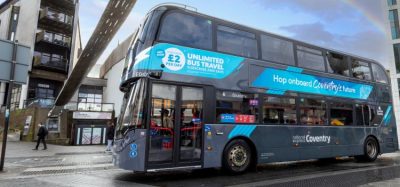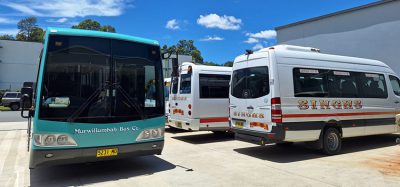LinkUS mobility implementation programme launched in Ohio
- Like
- Digg
- Del
- Tumblr
- VKontakte
- Buffer
- Love This
- Odnoklassniki
- Meneame
- Blogger
- Amazon
- Yahoo Mail
- Gmail
- AOL
- Newsvine
- HackerNews
- Evernote
- MySpace
- Mail.ru
- Viadeo
- Line
- Comments
- Yummly
- SMS
- Viber
- Telegram
- Subscribe
- Skype
- Facebook Messenger
- Kakao
- LiveJournal
- Yammer
- Edgar
- Fintel
- Mix
- Instapaper
- Copy Link
Posted: 7 July 2020 | Sam Mehmet (Intelligent Transport)
The programme centres mobility initiatives under one umbrella programme in a bid to improve congestion, mobility options and connectivity in Ohio and the City of Columbus.


The City of Columbus, Central Ohio Transit Authority (COTA), and Mid-Ohio Regional Planning Commission (MORPC) recently unveiled LinkUS, a collaborative effort with private sector and neighbourhood partners that allows for mobility implementation efforts within the region to be centred under one programme.
The LinkUS Mobility Corridors Initiative aims to help address traffic congestion, provide new mobility options, expand access to resources, and promote equity and economic vitality along key regional corridors. The initiative also aims to provide a consistent and equitable approach to implement transit and multimodal transportation improvements, coupled with new jobs and housing opportunities.
LinkUS has begun with the Northwest Corridor Mobility Initiative — the first of several corridor action plans that will identify and carry out preferred strategies to develop high-quality transit and mobility choices while bringing new housing and jobs to the corridor. Implementation efforts will also begin in 2020 for an East-West Corridor and a study of East Main and East Broad Streets. Other future corridors have been identified as part of a broader framework strategy created to guide the initiative.
“Today more than ever, we must move swiftly to address critical needs in Columbus and Central Ohio to foster a more resilient and inclusive region,” said Mayor Andrew J. Ginther. “As our region continues to grow, we must ensure that all residents prosper, not just a few. LinkUS will deliver mobility options in our community that will help increase equity by enhancing access to jobs, business development, housing and healthcare, and prepare for future growth that is inclusive and available for all of our residents.”
“LinkUS is an exciting catalyst for Central Ohio’s future that will improve our quality of life and add more mobility choices,” said MORPC Executive Director, William Murdock. “Our region is growing quickly and more diverse to a projected three million people by 2050. Planning and investing today along corridors will create better transportation and housing options for residents and businesses alike.”
“COTA’s vision is to move every life forward in Central Ohio, and that means finding innovative mobility solutions that provide access to jobs, health care, education, recreation, entertainment and other opportunities for prosperity,” added COTA president/CEO, Joanna M. Pinkerton.
“The recent events in our community and across our country have underscored various social and public infrastructure disparities that impede equity. COTA believes affordable, accessible and equitable public mobility systems will not only help better connect our most vulnerable residents to opportunity, but also prepare our region to handle the mobility needs of a million more people by 2050. I am incredibly grateful COTA is partnering with forward-thinking community leaders to prepare our region for a bright future.”
Throughout the process, the public will be invited to provide input to help ensure solutions address community needs. A variety of forums (including in person, virtual and other creative outlets) will be used to make participation a choice for all who care about the future of central Ohio’s mobility corridors.
“LinkUS is how we’re going to bring new high-quality transit to the City of Columbus,” said Columbus City Council president Shannon G. Hardin. “We’ve also got to capture the opportunities that come with better mobility to build more affordable housing, grow new jobs in our neighbourhoods, and create an urban environment that works for working families. We know that COTA ridership is disproportionately African-American and working class; creating a transit system that better serves our residents is a matter of racial and economic justice.”
Related topics
Fleet Management & Maintenance, Infrastructure & Urban Planning, Mobility Services, Multimodality, Public Transport, Sustainable Urban Transport, Transport Governance & Policy
Related cities
Ohio
Related organisations
Central Ohio Transit Authority (COTA), Mid-Ohio Regional Planning Commission (MORPC), The City of Columbus
Related people
Andrew J. Ginther, Joanna M. Pinkerton, Shannon G. Hardin, William Murdock








